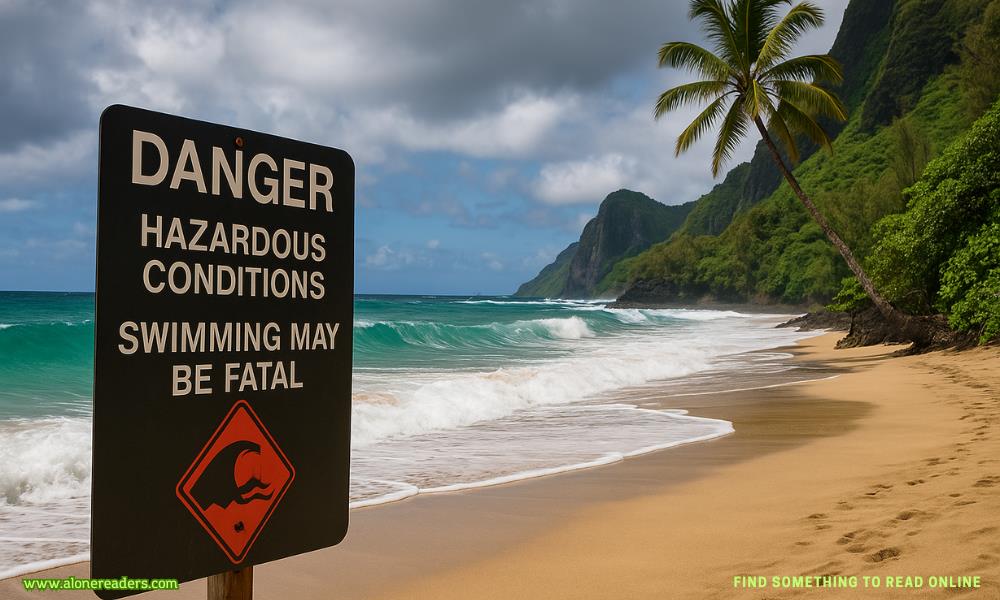
Beaches often symbolize peace, leisure, and natural beauty. People flock to them to swim, sunbathe, and escape their daily grind. But not all beaches are safe havens. Some coastlines are treacherous, hiding deadly marine life, powerful rip currents, extreme weather, and even volcanic activity beneath their picturesque façades. In this article, we delve deep into ten of the most dangerous beaches in the world, analyzing exactly what makes each of them so life-threatening.
What makes it deadly: Piranhas, candiru fish, extreme currents, and waterborne debris
While the Amazon River's banks may appear serene from a distance, beneath the surface lies one of the world’s most perilous aquatic ecosystems. Home to carnivorous piranhas capable of inflicting brutal injuries and the infamous candiru fish—known for parasitic invasions—these waters are a biological minefield. Additionally, the Amazon carries powerful currents and floating debris, including sharp branches and refuse that can easily injure or trap swimmers. The dense aquatic biodiversity here, though scientifically fascinating, significantly amplifies the risk for anyone entering the water.
What makes it deadly: Extreme pollution, contaminated water, health hazards
Chowpatty Beach may be culturally rich and visually captivating, drawing thousands during festivals and holidays, but the water quality is dangerously poor. Industrial waste, human sewage, and urban runoff have made this beach one of the most polluted in the world. Swimming in this toxic cocktail exposes visitors to skin diseases, gastrointestinal infections, and long-term health complications. The beach itself may be iconic, but entering its waters is strongly discouraged.
What makes it deadly: Unprecedented shark attacks, restricted swimming zones
Once a paradise for surfers, Réunion Island has gained a darker reputation over the past decade. A spike in shark attacks—particularly by bull and tiger sharks—has resulted in multiple fatalities. Authorities have banned swimming and surfing in high-risk zones to curb further tragedies. Despite its lush terrain and scenic coastal routes, the lurking presence of aggressive predators beneath the waves makes these beaches some of the most dangerous on Earth.
What makes it deadly: Box jellyfish, saltwater crocodiles, venomous marine species
Cape Tribulation offers a rainforest-meets-reef landscape, but its waters are anything but friendly. During the summer months, box jellyfish—whose sting can cause cardiac arrest—populate the shallow shores. Adding to the danger, saltwater crocodiles are often spotted near river mouths and along the coastline. Signage warns tourists, and locals advise staying clear of the water, especially during the warmer months. Even a simple dip here could become fatal without warning.
What makes it deadly: Powerful rip currents, multiple drownings, deceptive calmness
Hanakapiai Beach is a visual masterpiece—untouched, remote, and dramatically scenic. But beneath its pristine waves lie rip currents so powerful they have claimed over 80 lives. The beach offers no protective reef, allowing open-ocean forces to dominate. Once caught in one of these invisible currents, escape is nearly impossible, especially without immediate assistance. Warning signs dot the trail and the beach itself, urging even experienced swimmers to resist the temptation.
What makes it deadly: Shark sightings, deadly jellyfish, strong surf, crocodiles
Fraser Island might look like a tropical wonderland, but its coastal waters are packed with threats. The island is known for sightings of aggressive sharks, including tiger sharks. Add to that the seasonal influx of box jellyfish and potential visits from saltwater crocodiles, and the result is a treacherous environment. The island’s strong surf and riptides further escalate the danger, making swimming a highly discouraged activity despite the postcard views.
What makes it deadly: Great white shark hotspot, underwater hazards, strong waves
Nicknamed the "Great White Capital of the World," Gansbaai is a magnet for thrill-seekers and marine biologists. It’s one of the few places where you can cage dive with great white sharks. However, the presence of these apex predators so close to shore means the beach itself is not suitable for casual swimming. Additionally, rocky sea floors and strong Atlantic currents contribute to the region's hazardous profile. This beach is best observed from the safety of dry land—or a reinforced shark cage.
What makes it deadly: Deadly rip currents, no lifeguard coverage, deceptive waves
Playa Zipolite is a serene stretch of sand on Mexico's Pacific coast known for its bohemian vibe. But its other name, “The Beach of the Dead,” reveals its true character. Dangerous rip currents lurk beneath seemingly manageable waves. These currents can overpower even skilled swimmers, pulling them into deeper, less controllable waters. Though lifeguards are more common now, the beach’s history of drownings serves as a haunting reminder of its dangers.
What makes it deadly: Most recorded shark bites globally, marine activity concentration
Despite its tranquil appearance and inviting shoreline, New Smyrna Beach holds the world record for the most shark bites. The beach's position near multiple inlets and estuaries draws large schools of fish, which in turn attract sharks—particularly blacktip and spinner sharks. Swimmers, surfers, and fishers often find themselves uncomfortably close to these predators. While most bites are non-fatal, the frequency and unpredictability make this beach especially risky.
What makes it deadly: Volcanic activity, toxic gases, lava flows
Kilauea Beach lies perilously close to the highly active Kilauea Volcano. When the volcano erupts, molten lava spills into the ocean, causing explosive interactions and releasing noxious gases like sulfur dioxide and hydrochloric acid. This not only changes the local water chemistry but can also cause sudden changes to the beach's physical geography. Swimmers face the threat of burns, poisoning, or entrapment under newly formed terrain. While dramatic to witness, this beach is absolutely not a place for water-based recreation.
Conclusion
Beaches can deceive. Beneath their golden sands and shimmering waves may lie fatal dangers—from man-eating sharks and venomous jellyfish to deadly currents and volcanic threats. Understanding these risks is not about inducing fear but ensuring preparedness and respect for nature’s power. If you're planning a visit to any of these beaches, remember that beauty can be deceptive, and caution can be lifesaving. Always research local warnings, obey posted advisories, and, when in doubt, admire the ocean from a safe distance.